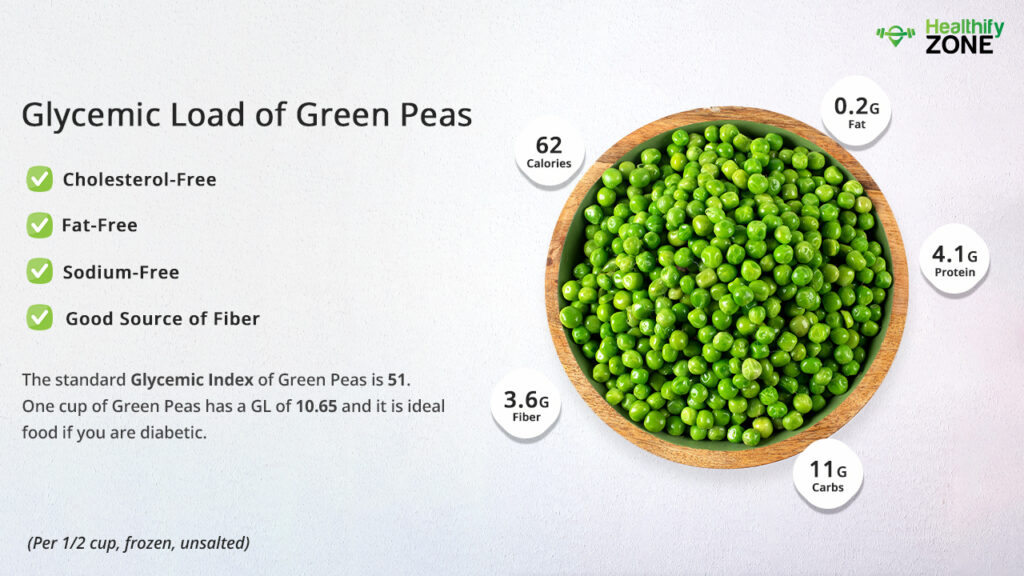The Glycemic Index of Green Peas is 48. The pea is a common cool-season vegetable crop that is a green, pod-shaped vegetable. Peas are a tiny nutritional powerhouse loaded with vitamins, minerals, and antioxidants. Peas have a low glycemic index of 48. Including green peas in your diet regularly is regarded as a blessing because they naturally contain vitamins and minerals. Due to its extremely low-calorie content, it also helps prevent other lifestyle disorders, including obesity.
Is Green Peas Safe for Diabetes?
For diabetics, it shows to be really useful. Of course, portion size matters. Green peas only have 11.1% of a cup’s worth of complex carbs (approx. 70 g). Additionally, green peas include a sizable amount of soluble fiber (6.02 g in a half cup), which slows down the absorption of nutrients and, as a result, prevents wild swings in blood sugar levels. Green peas really contribute to a feeling of fullness when coupled with any cereal or pulse because they also offer 5.04 gms of protein in just a half cup. Always choose foods that have a low glycemic index to pair with your vegetables since this will reduce the total meal’s glycemic load.

Is Green Peas Suitable for Weight Loss?
Green peas are the most frequently used guilt-free food in everyday diets since they have a very low-calorie count. They have a great flavor and are also highly nourishing for those who are trying to lose weight. It is a versatile vegetable that complements all other recipes and helps to make the dish healthy. The greatest choice is green peas because they have 6.02 g of fiber in just a half cup. Consuming foods high in fiber causes nutrients to enter the bloodstream slowly, keeping you fuller for longer and preventing binge eating. The amount of extra calories consumed is also significantly decreased, thereby promoting weight loss.
What is the Best time to Consume Green Peas?
You can eat green peas anytime except before going to bed. Acetylcholine, a neurotransmitter that helps control your brain activity while you sleep, is produced with its assistance. Additionally, it aids in the production of melatonin, a hormone in the brain that regulates your regular sleep-wake cycle.
The Bottom Line: The Glycemic Index of Green Peas is 48.
Green peas are among the best plant-based sources of protein, which, together with their high fiber content, is a key factor in why they are so full.
Consuming protein raises your body’s levels of several hormones that suppress appetite. In conjunction with fiber, protein slows digestion and increases feelings of fullness. By controlling your appetite, eating enough protein and fiber can automatically lower the number of calories you consume throughout the day. Because of their unique protein makeup, green peas are an excellent lunch option for persons who do not consume animal products. However, they are not a complete source of protein since they lack the amino acid methionine.
To compensate for the lack of some essential amino acids in your diet, make sure to pair green peas with another protein source. Consuming adequate protein to support the health of your muscles and bones is also essential. Additionally, both weight reduction and weight maintenance depend on it.